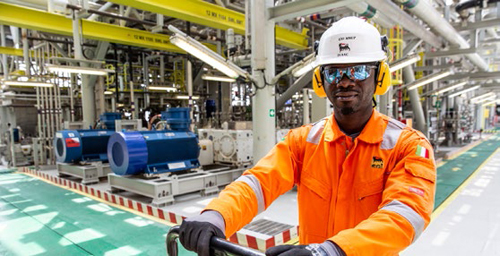ADVOCACY: Public-private partnerships: leveraging investments to enhance energy access
Africa’s large energy resource base has gone largely undeveloped, but a swathe of new, multi-stakeholder projects are targeting equal energy access for all, writes Eni
Today, too many Africans are denied the capacity to make plans for the future because they don’t have access to clean, affordable, reliable and sustainable energy. In sub-Saharan Africa, almost 600 million people – just over half of the population – live without access to electricity, and close to 900 million people use biomass for cooking and heating. Africa is home to 17% of the world’s population, but its annual energy consumption is just 6% of the global total. To put this into perspective, the average African consumes about 34% of the energy of an average Chinese citizen, 22% of a European and a remarkable 10% of an American.
The electricity-generating capacity of the region has changed little in more than 20 years, yet the continent has a large resource base that is exploited only in part. This needs to change.
Fixing the problem of this lack of access to energy requires a vast joint effort between governments, international institutions and the private sector. Effective solutions can be triggered by public-private partnerships, where the private sector joins forces with governmental agencies to provide skills and know-how in addition to financial resources to attain greater and more successful results. However, for this to work a strong public sector is vital in order to provide guarantees to investments, assess the impact of the initiatives and strengthen and support the capacities of the local communities.
Eni has a portfolio of projects aimed at increasing access to energy in Africa that are testament to the effectiveness of this multi-stakeholder approach.
A good example is Ghana’s Offshore Cape Three Points project. This integrated development project is the only project in sub-Saharan Africa in which deep-water non-associated gas has been developed entirely for the domestic market. OCTP will provide 180 million standard cubic feet a day for at least 15 years, enough to convert half of Ghana’s power-generation capacity to cleaner and more efficient gas. Not only will this contribute to the country’s energy stability, a prerequisite for industrial and economic growth, but it should also give Ghana time to embrace renewable energy solutions. This development was made possible thanks to an innovative form of cooperation among the private sector, development finance institutions and the public sector. This included an innovative payment security structure involving World Bank guarantees amounting to $700 million from the International Development Association and the International Bank for Reconstruction and Development.
Mozambique’s Coral South floating liquefied natural gas facility in Mozambique is another relevant example of coordinated multi-stakeholder efforts enabling Mozambican gas resources to be developed. At the end of 2017, despite a challenging environment, Eni, together with its partners, finalised $4.9 billion of project financing for the Coral South FLNG facility with a capacity of around 3.4 million tonnes per annum of LNG. Coral South FLNG is the first project sanctioned by the Area 4 partners for the development of the considerable, world-class gas resources discovered in the Rovuma Basin. The financing has involved 15 banks and five export credit agencies from Italy, China, Korea and France.
These are two concrete examples of how Eni’s ‘dual flag’ approach is applied. Eni aims at leveraging partnerships for development in order to share its experience, professionalism and knowledge, as well as economic and relational resources. The objective is to guarantee, through authoritative and internationally recognised partners, technical and methodological support for the development and implementation of long-term projects, capacity building, training and awareness, in line with the needs of the countries and the 2030 Agenda.












